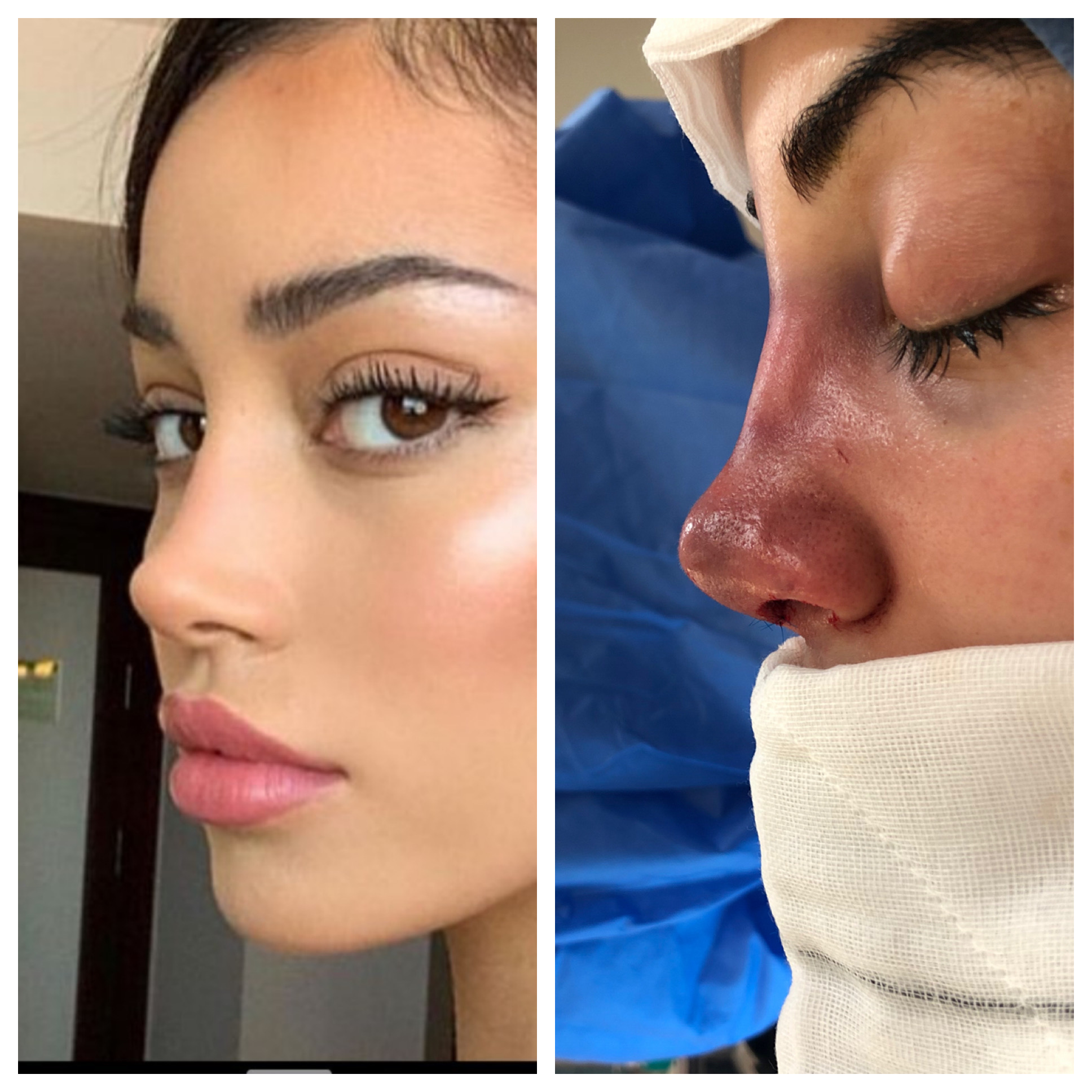Is the bump making a comeback? We asked Sydney plastic surgeon Dr Jack Zoumaras.
The NY Times posted an article last month that got us thinking. It was titled The New Nose: Is the Bump Back?. It started by introducing Elina, a Manhattan creative director, who shelved the idea of a nose job at 18 because of the startling before and after pictures.
“This doesn’t look like me. This doesn’t feel right,'” she told The NY Times.
It’s only in her 30s when scrolling Instagram she found New York plastic surgeon Dr Dara Liotta who specialises in natural-looking nose jobs. A costly $15,000 (USD, might we add) later, Elina had a new nose, and her friends didn’t even notice a difference.
“She left me this bump,” Elina exclaimed.
Rhinoplasties or ‘nose reshaping’ was listed fourth in the top surgical and non-surgical treatments of 2019, according to the American Society of Plastic Surgeons. However, in comparison to 2000’s statistics, the number of rhinoplasties performed in 2019 in The States is down 47 per cent.
Several surgeons told The NY Times that the approach to rhinoplasties has changed over the last twenty years. Gone are the days of one-nose fits all, along with the overly carved, pinched tip rendition popularised by Dr Howard Diamond, dubbed the Dr Diamond nose. It’s now about artistry and fitting the nose to the individual. Ski-slopes are to remain on the hills of Perisher because on the face they become aging, structurally unsound and most patients end up back in surgeons’ waiting rooms wanting them revised.
Sydney plastic surgeon Jack Zoumaras believes this is entirely true, and he should know best. He performs three to five rhinoplasties a week in his practice, Artiste Plastic Surgery, as well as being the current Chairman of the Aust Society of Plastic Surgeons, NSW Chapter.

“Rhinoplasty is 50 per cent engineering, 25 per cent mathematics and 25 per cent artistry,” Zoumaras said.
He says surgeons need to engineer the nose to ensure it has structural integrity before changing the shape, to ensure it lasts the distance and does not collapse. New technology developed for dentistry has made the hammer and chisel technique a thing of the past. A fine instrument tool called Piezotome uses ultrasonic technology to carve bone, cartilage and reduce the dorsal hump.
“The mathematics comes from aspiring to the golden ratio of 0.67 when shaping the tip relative to the length of the nose. And the artistry is the individual surgeon’s ability to mimic what the patient wants and ensure it looks good for them,” he said.
However, when it comes to the trends, Zoumaras is noticing different aspirations in his patients compared to those overseas. While the bump might be back in America, Australians are still fixated on achieving the Instagram-perfect nose. Even if they aren’t aware of it themselves. Zoumaras describes this as narrow, sharp with a supra tip break and gentle slope from the side.
“I would say that the sentiment is there to look the same as before, but the vast majority want an Instagram nose, even after telling me they do not want a big change,” Zoumaras said.

DID YOU KNOW
There are 5 ways you can catch up with SPA+CLINIC?
- Our quarterly print magazine, delivered to your door. Subscribe here.
- Our website, which is updated daily with its own completely unique content and breaking news.
- Our weekly newsletter – free to your inbox! Subscribe here.
- Our digital magazine – click here to view previous issues.
- Our social media – see daily updates on our Instagram, Facebook & Linkedin




